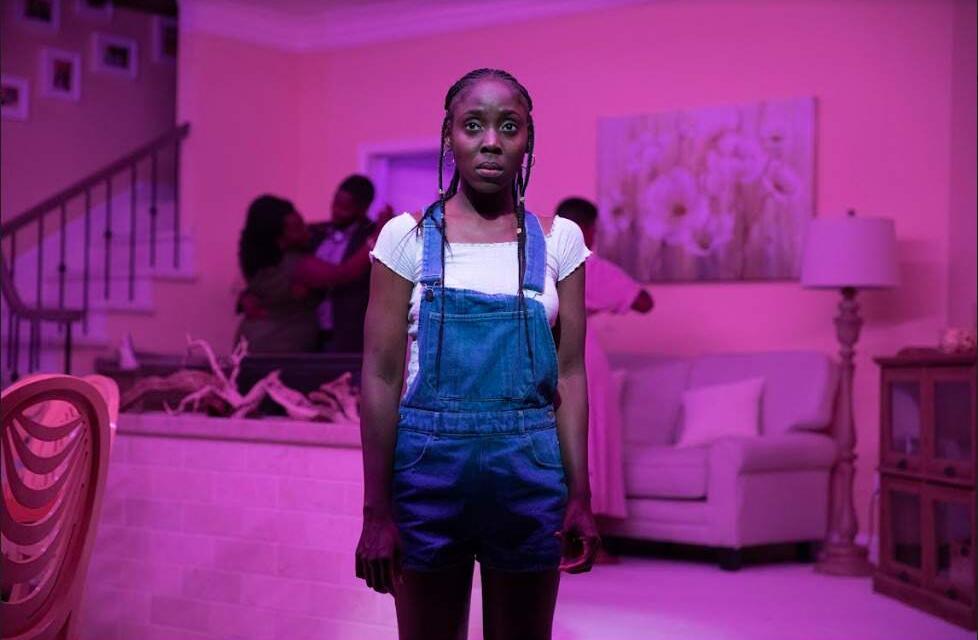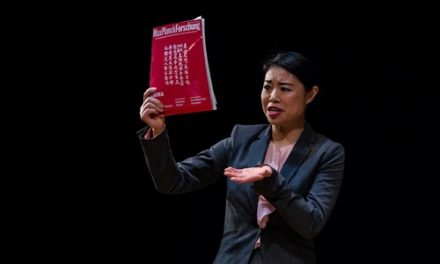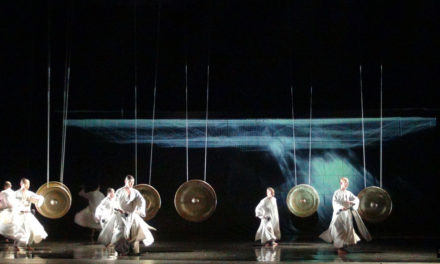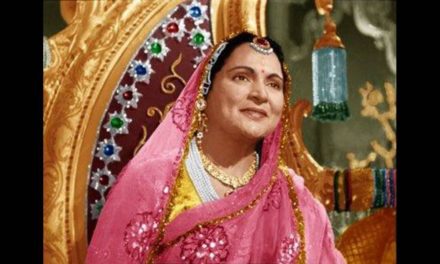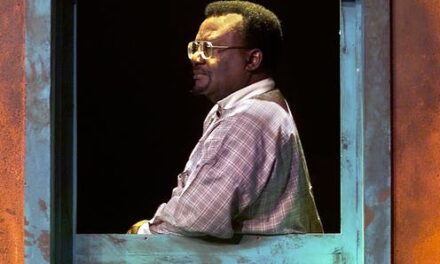African American drama, theater and performance has a rich and complex history. Only recently, however, the U.S. theater establishment seems to recognize the work of young Black playwrights more often. This is evident, for example, from the awards and nomination lists of multiple prestigious prize committees such as the Pulitzer Prize for Drama or the Tony Awards for Broadway productions. The winning plays are not only lauded for addressing racial themes, but for doing this in a way that experiments with dramatic conventions and African American performance history. How exactly, then, do these playwrights engage with dramatic form? How are their stage experiments connected to topical debates sparked by the Black Lives Matter Movement? Above all, how is their work relevant for the Belgian context?
March 5th, 2022. I’m in New York City to conduct field work and archival research for my PhD project. Since November of last year, I’ve been working on a project about contemporary African American metatheater. I’m residing in Bed-Stuy (Bedford-Stuyvesant), Brooklyn, which is, demographically, a historically important African American neighborhood. For the coming two weeks, I’ll be visiting the New York Public Library for the Performing Arts as well as the Theatre on Film and Tape Archive (TOFT) to watch recordings of plays, read and document reviews, playwright interviews, and program booklets of performances.
Post-Blackness in the 2010s
To better understand the current age in which Black U.S. playwrights are developing their work, let me problematize the term post-blackness. From the late 1990s onwards, post-blackness – coined by art curator Thelma Golden – has gained critical currency in the U.S., referring to work made by post-civil rights era artists (born after 1964 – present), post-Black art does not let itself define in terms of race alone. Instead, it is characterized by unstable, complex, and intersectional representations of Black life that uncouple race from a normative straitjacket and often unsettle the white ideological norms that traditionally govern Black identity in a parodic and comedic way[1]Harry J. Elam, Jr and Douglas A. Jones, Jr, eds., The Methuen Drama Book of Post-Black Plays (London: Bloomsbury, 2013), xii.. Branden Jacobs-Jenkins’ debut play Neighbors (2010) is a good example. A family of minstrel actors played by Black performers in blackface, move next to a Black college professor and his white wife. In experimental fashion, Neighbors juxtaposes a non-stereotypical view of Black family life with America’s most blatantly racist performance genre, the minstrel show. At the same time, the play’s title and setting suggest a representational lineage between racist blackface performance and contemporary sitcom.
As Neighbors puts forth, racial identity is not a homogeneous experience, but the process of racialization still prevails. Hence, post-blackness can easily be mistaken for colorblindness and a post-racial society[2]See, in this regard, Houston A. Baker and K. Merinda Simmons, eds., The Trouble with Post-Blackness (New York: Columbia University Press, 2015).. The rapid growth of the Black Lives Matter movement (#BLM) since the early 2010s might be an expression of the discontent with post-blackness’ optimistic project of the 1990s and early millennium. According to African American theater scholar Soyica Diggs Colbert, #BLM is an expression of “black rage”, which designates a wide-spread urge to protect the rights of Black people in the U.S. and strives for Black political collectivity born out of this shared feeling of rage, which acknowledges the limits of African American citizenship[3]Soyica Diggs Colbert, “Black Rage: On Cultivating Black National Belonging”, Theatre Survey (vol. 57, no. 3, 2016), 337. Younger generations recognize that the African American experience is diverse, but recenter the debate to race because this very diversity gets overshadowed by deep-structured, implicit (as well as explicit) racism. It is in this complex and rapidly changing context that the work of experimental Black U.S. playwrights is finding its own voice.
Looking at Belgium, then, historical and social differences aside, one cannot really discern a similar legacy of Black diasporic playwriting compared to the African American theater tradition (i.e., comparable to the impressive legacies of Lorraine Hansberry, Ntozake Shange, or August Wilson). Although Belgium has not known the same history of continental slavery as the U.S. has, this great difference in diasporic cultural output always strikes me as odd given Belgium’s exploitations on the African continent, which have had an equally lasting impact on the country’s socio-demographic fabric today. Vamba Sherif and Ebissé Rouw describe a similar sentiment in the introduction to the very first anthology of Afro-European literature in the Low Countries, ZWART. The literary establishment often shows more interest in Black Anglophone writers, whereas the work of diasporic Belgian and Dutch voices is seen as formally less interesting and is, paradoxically enough, reproached for all too easily mirroring American racial concerns to the European context[4]Vamba Sherif and Ebissé Rouw, Zwart: Afro-Europese literatuur uit de Lage Landen (Amsterdam: Atlas Contact, 2018), 12.. Yet, #BLM has gained critical currency in Belgium by now, and increasingly more performances by Black theater makers and about racial concerns are being produced and programmed by Belgian theater companies and theater houses. As a researcher in American theater, I think it very useful to compare both cultural contexts. Such a consideration allows, in fact, for a better understanding of what Belgian diasporic theater shares with African American playwrights, and importantly, in which ways it makes aesthetic choices to reflect its specific Belgian socio-historical dimension and own theater conventions.
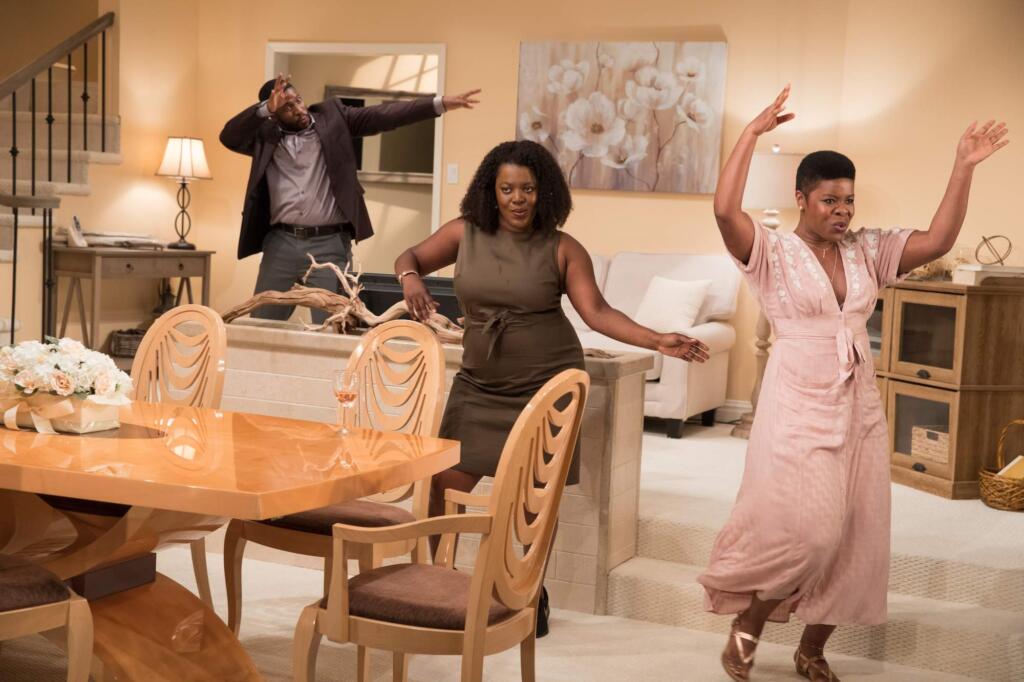
Fairview. Soho Rep Theatre. Photo Credit: Julieta Cervantes.
Unmasking the Minstrel Mask: The Politics of Genre
In my experience as a theater researcher, the Anglophone world (especially the U.S. and the U.K.) still rely heavily on a tradition of playwriting. Hence, much of U.S. theater is labelled as ‘play’ in program booklets, whereas most Belgian performances I attend are rarely labelled as such, but are better characterized as theatrical performance pieces. This prevailing focus on performance in contemporary Belgian theater can possibly be interpreted as a lasting influence of the post-dramatic ‘Flemish wave’ from the 1980s to the 1990s. Although post-dramatic dramaturgy has been an integral part of some internationally renowned U.S. companies (think Wooster Group or Nature Theater of Oklahoma), I’ve experienced that many Broadway and Off-Broadway theater houses tend to program text-based theater and spotlight the playwright rather than a director or company when marketing a performance.
Looking at experimental African American playwrights from the 2010s onward, I have the impression that they often critically insert quintessential American genres in their work. In doing so, contemporary Black U.S. playwrights inscribe themselves within (Off-)Broadway’s dramatic tradition while also commenting on certain performance traditions that have historically perpetuated stereotypical images of Black life. From Jacobs-Jenkins’ early work during Obama’s presidency to (post-)Trump plays such as Jackie Sibblies Drury’s Pulitzer Prize winning Fairview (2018) and Dave Harris’ explosive Tambo & Bones (2022), there seems to be a continuing urge to unmask the minstrel mask. Although minstrelsy might be better characterized as a performance genre (because of its obvious focus on dancing and singing Black bodies) than a text-based genre, its co-occurrence with genres such as melodrama reframe the representational and ideological legacies of such dramatic structures. Traditionally, in American popular culture, melodramatic imaginations of slavery’s past have reduced the accountability of white slave owners by framing them as victimized heroes. At the same time, melodramatic anti-abolitionist accounts such as Harriet-Beecher Stowe’s Uncle Tom’s Cabin (1852) established a problematic empathy for the plight of suffering Black enslaved people[5]Linda Williams, Playing the Race Card: Melodramas of Black and White from Uncle Tom to O.J. Simpson (Princeton and Oxford: Princeton University Press, 2001). depict the hardships of slavery in an emotional and affective way to support the urge of abolitionism. Casting Black people in a precarious and subservient position, on the other hand, implies that they can only acquire virtue through victimization, which implicitly underscores the Master-Slave binary.
By using racialized performance strategies such as black, white and red facing, Branden Jacobs-Jenkins’ second play An Octoroon (2014) problematizes precisely this fraught sense of sympathy by using strategies from minstrel performance. A rewrite of Irish playwright Dion Boucicault’s Victorian melodrama from the mid-19th century, An Octoroon was the first in a series of performance recordings I watched at the TOFT archive that immediately stuck with me. The play depicts a Black playwright-protagonist called ‘BJJ’ (an obvious reference to Branden Jacobs-Jenkins himself) who confides to the audience that he is rewriting Boucicault’s classic as a form of therapy. Playing the roles of a virtuous and innocent slave owner, George, and a callous property buyer, M’Closky, BJJ embodies both the white ‘hero’ and ‘villain’ in his own play. The visual image of a Black man applying white paint to his face and putting on a blonde wig and seeing the white villain he played publicly sentenced to death was theatrically so arresting to me that I started reflecting what I had actually seen and wondered where Jacobs-Jenkins’ melodramatic adaptation had located my sympathies. Was I supposed to cheer on the defeat of the ‘bad guy’ or was I indulging in the image of a Black body lynched onstage? Even more disturbingly, An Octoroon’s dramatic action unfolds in a comedic way, being hilariously exaggerated (just like a melodrama). Indeed, comedically unsettling the ‘white’ ideological norms governing the genres of minstrelsy and melodrama, An Octoroon connects just as well to a post-Black aesthetic as Jacobs-Jenkins’ debut Neighbors and later plays do.
Yet, presenting non-normative images of blackness through playful revisions of the racialized performance strategies informing popular American genres is not entirely new on the African American stage. George C. Wolfe’s by-now classic post-Black play The Colored Museum (1986) comedically parodied various stereotypical Black cultural figures such as Aunt Jemima or the Black queer man, Ntozake Shange’s Spell #7 (1979) juxtaposed minstrelsy with African celebratory dancing, while Adrienne Kennedy’s Funnyhouse of a Negro (1964) referenced white-facing practices in a more serious fashion in correspondence with the urging demands of the 1960s Civil Rights movement. But does unmasking the minstrel mask alone suffice to undo racializing perceptions? Can post-Black parody bring about political change?
Jackie Sibblies Drury’s Fairview seems to suggest that it cannot. Similar to Jacobs-Jenkins’ Neighbors, Drury’s Pulitzer Prize winning play draws parallels between sitcom and minstrelsy through an ingenious play within narrative structure. Written as a classic three-act piece, the first act depicts the Black Frasier family preparing a birthday dinner for Grandma. In the second act, the characters replay the action in pantomime while invisible voices of white TV-watching characters are heard commenting in highly racialized terms on the Frasiers. In the third act, the white characters play the roles of the – until then – absent Black family members. Since both white and Black actors imitate and parody stereotypical representations of blackness, the satirical potential of the roleplay falls flat. However, in the end, daughter Keisha cannot stand it anymore. She radically breaks the fourth wall and invites non-Black audience members to put themselves where her family has been, on stage, and on display for everyone to project their racialized perceptions on them. Although rooted in American theater traditions, Fairview is also relevant to the Belgian context, especially in view of recent debates in Flemish media about so-called censorship of popular sitcom episodes that would contain blackface practices and the N-word. Drury’s play ingeniously questions supposedly “good” intentions to make minoritized groups visible to the broader public by dramatizing the conditions of production and reception of television parody and satire (By whom, for whom, and to what effect are these stories and jokes made?). In so doing, just like An Octoroon, Fairview addresses, or even assaults, America’s white, liberal theatergoing class via striking self-reflexive devices.
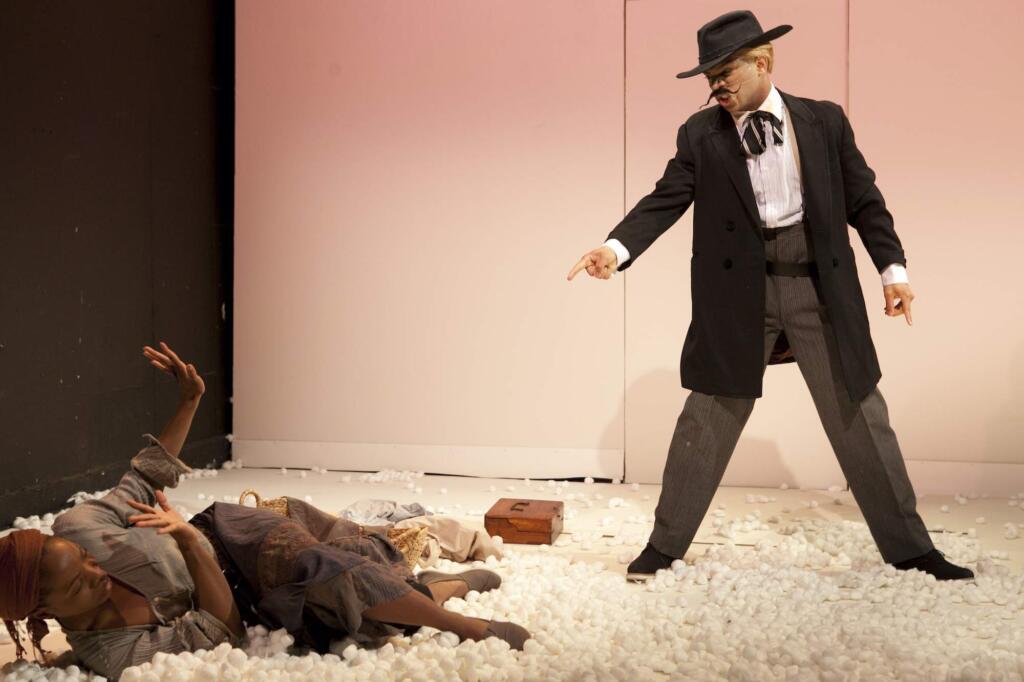
An Octoroon. Soho Rep Theatre. Photo Credit: Pavel Antonov.
Representational Politics and America’s Theatergoing Class
Thus, a more radical attack of (Off-)Broadway’s audience composition and its relation to the action onstage is at stake in experimental African American theater of the 2010s. Comparing the recording of Wolfe’s The Colored Museum with that of Drury’s Fairview and my reading of Jacobs-Jenkins’ Neighbors, I argue that both Drury and Jacobs-Jenkins question the effectiveness of parodic roleplay and assault the audience in ways that earlier post-Black plays did not. Indeed, the TOFT recording of The Colored Museum shows how a predominantly white, middle-class audience casually leaves the theater venue, as they would after a conventional play. Contemporary self-reflexive plays, by contrast, provide a different experience as they exteriorize the dramatic action into the audience space itself. Keisha’s appeal at the close of Fairview physically shifts the racialized stage-audience power dynamics, and, watching a recording of the performance, I noticed how the audience space is emptied with only a few Black theatergoers left in the auditorium. Similarly, Neighbors’ impact continues beyond the end of the play: as stipulated in Jacobs-Jenkins’ stage directions, daughter Patterson and the minstrel family’s eldest son linger on in the auditorium after the performance to talk about their feelings[6]Branden Jacobs-Jenkins, “Neighbors”, in Reimagining A Raisin in the Sun: Four New Plays, edited by Rebecca Ann Rugg and Harvey Young (Evanston: Northwestern University Press, 2012), 402-403.. In so doing, these plays could be described as attempts to share the burden of representation with their theater audiences.
More than ever, and despite these attempts however, young and aspiring Black playwrights seeking to censure stereotypical images of blackness cannot escape the obligation to deal with that burden. Jeremy O. Harris’s commercially successful, but equally controversial Slave Play, for example, depicts three present-day inter-racial couples enacting various scenes of sexual and racial subjugation on an imaginary Southern plantation as part of ‘Antebellum Sexual Performance Therapy’ to solve emotional rifts in their relationships. Especially scenes that depict a Black woman twerking submissively before her white husband/Master and eventually being raped by him, caused commotion among both Black and white theatergoers. Moreover, written as a dramatic three-act structure, Slave Play’s final rape scene does not provide anagnorisis in the traditional sense of the word to its characters, nor any sense of classic dramatic closure to its actual audience. In that sense, some of Slave Play’s scenes echo Suzan-Lori Parks’s earlier piece Venus (1996), which reenacts Saartje Baartman’s historical display as a freak show spectacle in early 19th-century Europe. Different from Venus, Slave Play’s white characters are not inherently racist, but struggle with comprehending and acting upon their own complicity in hegemonic structures. Hence, similar to Drury and Jacobs-Jenkins, Jeremy O. Harris’s experiments with dramatic form address contemporary politics of representation (rather than the racism of individual historical characters) head on.
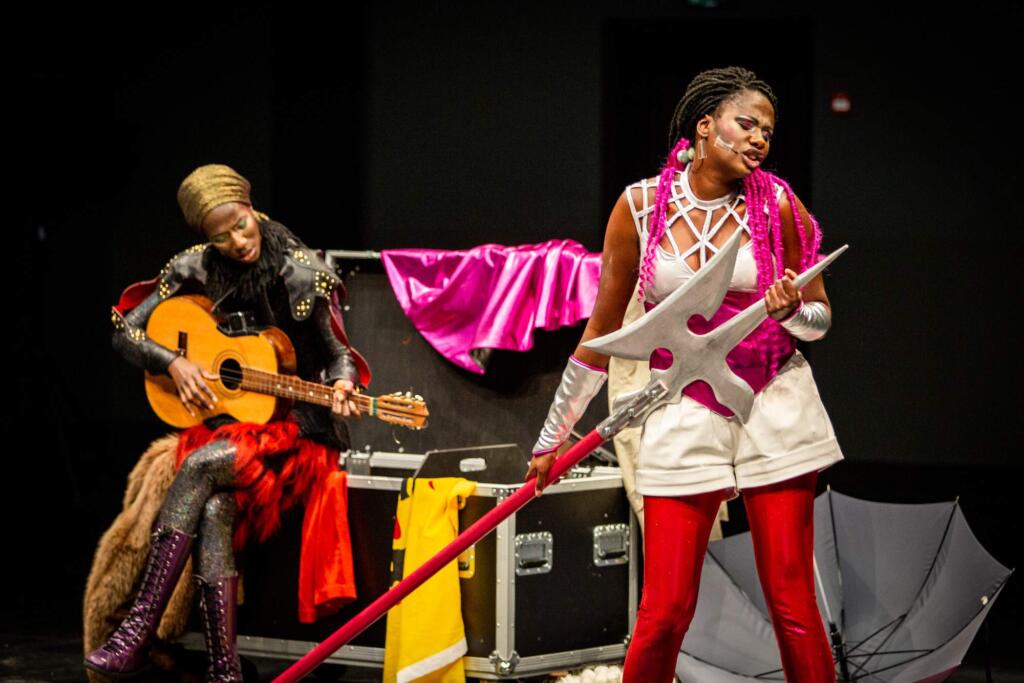
C.A.T.C.H.. Aïcha Cissé, Aminata Demba & Frédérique Lecomte / KVS. Photo Credit: Karolina Maruszak.
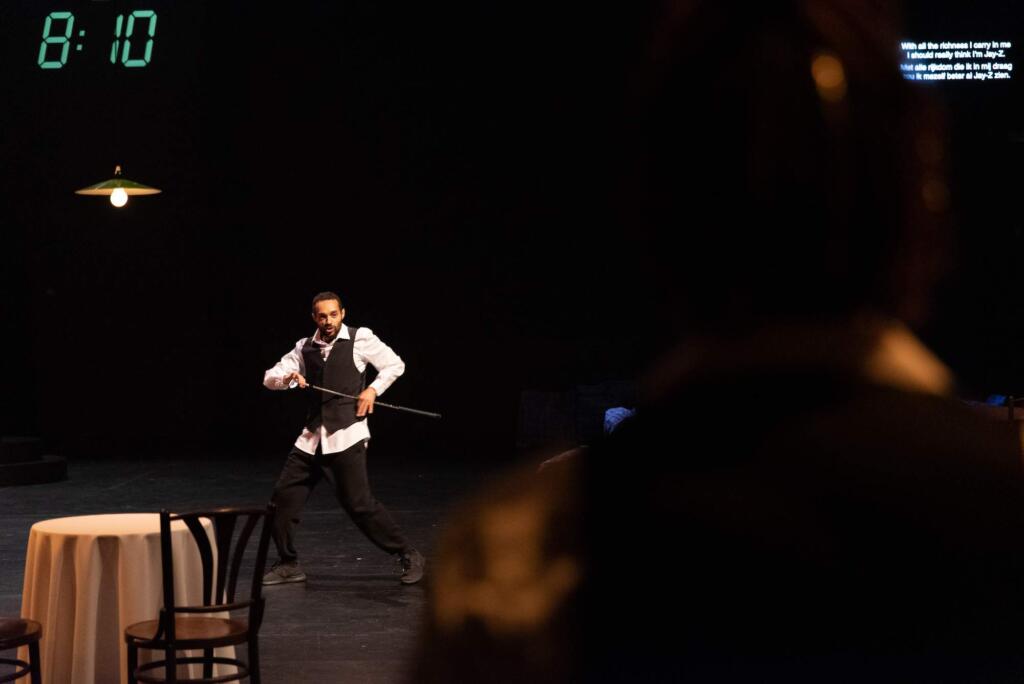
Fire Will Become Ashes, But Not Now. Pitcho Womba Konga & Mike van Alfen / KVS. Photo Credit: Tom Bruelemans.
Back to Belgium
22nd of March 2022, I’m back in Belgium and resuming my daily research activities. In Belgium too, I follow current developments in Black diasporic theater from closely. Last February, just before I left for New York, I saw Fire Will Become Ashes, But Not Now (Pitcho Womba Konga and Mike van Alfen / KVS) at KVS BOX. Similar to current formal developments in African American theater, the performance experiments with performances genres and the dynamic between stage and audience. Framed as a variety show, the audience are seated at white-clothed tables while the cast deconstructs Black stereotypes through various vignettes: a comedy performance and a Black queer person dancing, among others. One performer, dressed in evening clothing and with cane – reminiscent of American minstrelsy – talks us through the evening. Another reference to African American history is the piece’s very title, which is a play on James Baldwin’s pamphlet The Fire Next Time (1963). With the title’s future-bound intertextual reference, Womba Konga locates the change that his decolonizing project should bring about in the future while establishing a topical link between Baldwin’s 1960s’s urgency for systemic change and the present Belgian context.
C.A.T.C.H. (Aïcha Cissé, Aminata Demba and Frédérique Lecomte / KVS), another performance I attended at KVS BOX last March shares the decolonizing purpose of Fire Will Become Ashes, But Not Now. An acronym of “Coalition Against Type Casting Horror”, C.A.T.C.H.’s two female protagonists, Cissé and Demba, use roleplay to parody their plight of being cast in stereotypical Black female roles (if at all). Their performance similarly reflects on the burden of representation that Black theater artists face, but translates this issue to the Belgian context by making reference to national pop culture.
Taken together, Womba Konga’s and Cissé and Demba’s performances suggest that Black Belgian diasporic theater, just like their African American counterpart, uses similar self-reflexive strategies and focusses on decolonizing racialized perceptions. Especially the use of pop cultural references infused with parodic commentary on racial stereotypes is a beloved technique for both to address the white gaze in (predominantly) white theater spaces. Moreover, Belgian theater makers often draw a direct philosophical parallel between their own aesthetic projects and to African American cultural icons. Importantly, however, distinct differences in theater traditions (Belgium’s history of performance-based theater vs. the U.S.’ greater focus on text-based theater) influence the dramaturgical effect their use of self-reflexives strategies taken. Whereas I feel that parodic replay of a stereotype is seen as having a subversive enough dramaturgical effect in Belgian performative theater, African American theater is so ingrained within traditions of American drama (especially if one wants to attract a larger audience on (Off-)Broadway) that younger playwrights have been reflecting more overtly on the affordances and, most importantly, the limitations of decolonizing strategies, such as parody, in dramatic theater.
That said, the 2022-23 theater season promises, yet again, an interesting program of Belgian diasporic theater. Theater collective Jr.cE.sA.r reprises its performance of Who’s Tupac?, and Luanda Casella’s Killjoy Quiz and Lisette Ma Neza’s Some Girls Want to Go to Europe have been selected to perform at the Theaterfestival in Ghent. It has yet to be observed in which forms playwrights and theater makers find productive to tell their stories, which dramaturgical direction they will take in the future and how their formal decisions relate to the racial context and theatrical traditions their work is situated in.
This article was originally published by The Conversation on August 10th, 2022, and has been reposted with permission. To read the original article, click here.
This post was written by the author in their personal capacity.The opinions expressed in this article are the author’s own and do not reflect the view of The Theatre Times, their staff or collaborators.
This post was written by Jade Thomas.
The views expressed here belong to the author and do not necessarily reflect our views and opinions.
Notes
| ↑1 | Harry J. Elam, Jr and Douglas A. Jones, Jr, eds., The Methuen Drama Book of Post-Black Plays (London: Bloomsbury, 2013), xii. |
|---|---|
| ↑2 | See, in this regard, Houston A. Baker and K. Merinda Simmons, eds., The Trouble with Post-Blackness (New York: Columbia University Press, 2015). |
| ↑3 | Soyica Diggs Colbert, “Black Rage: On Cultivating Black National Belonging”, Theatre Survey (vol. 57, no. 3, 2016), 337 |
| ↑4 | Vamba Sherif and Ebissé Rouw, Zwart: Afro-Europese literatuur uit de Lage Landen (Amsterdam: Atlas Contact, 2018), 12. |
| ↑5 | Linda Williams, Playing the Race Card: Melodramas of Black and White from Uncle Tom to O.J. Simpson (Princeton and Oxford: Princeton University Press, 2001). |
| ↑6 | Branden Jacobs-Jenkins, “Neighbors”, in Reimagining A Raisin in the Sun: Four New Plays, edited by Rebecca Ann Rugg and Harvey Young (Evanston: Northwestern University Press, 2012), 402-403. |

